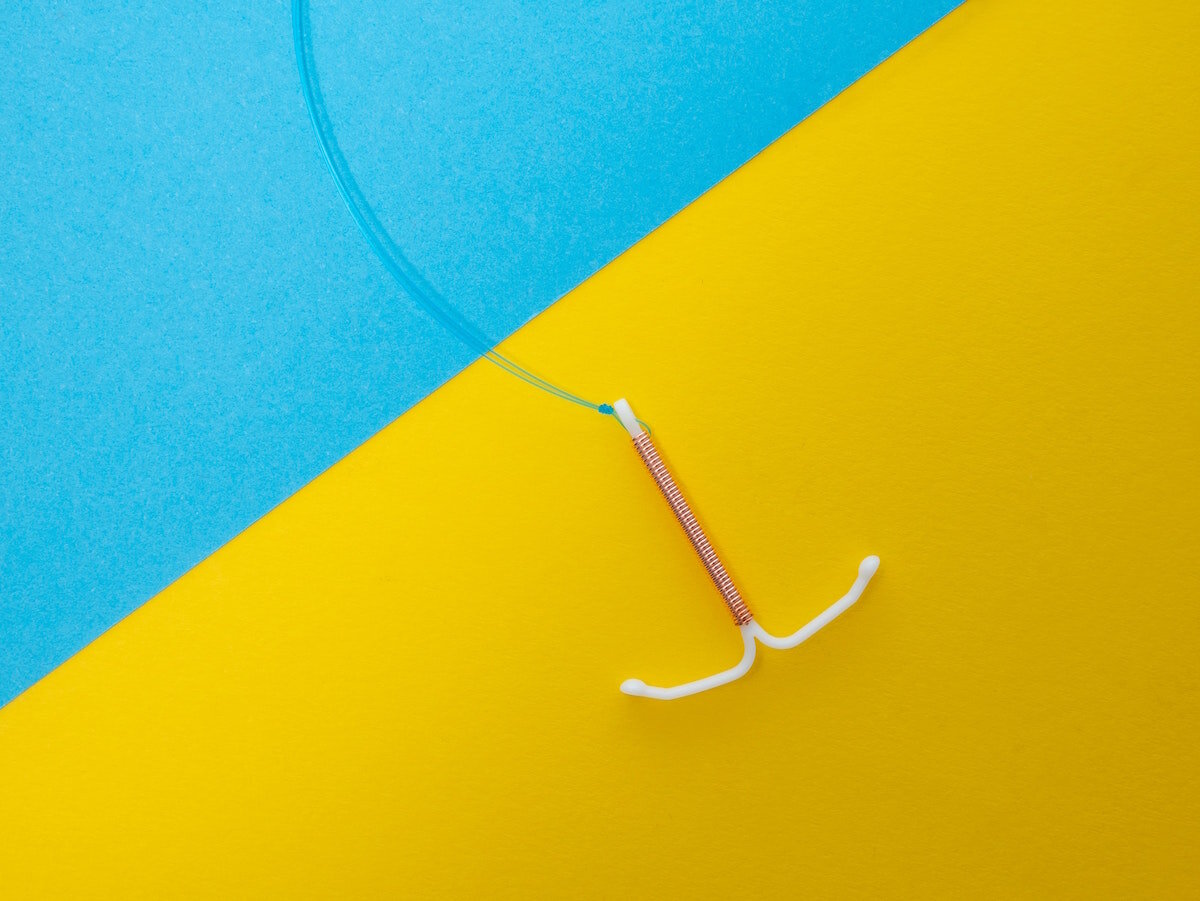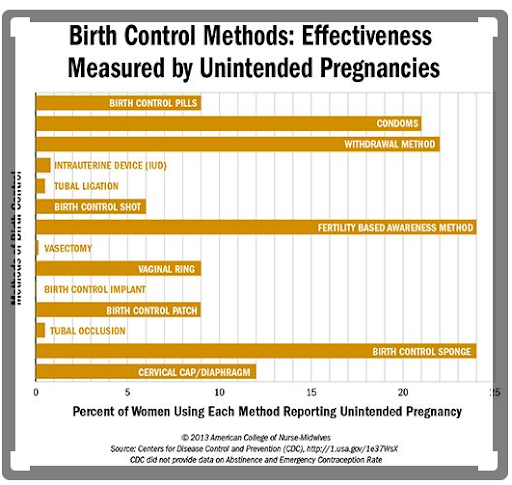The IUD and Other Alternatives to the Pill: Your Birth Control Guide [Updated]
Written by Dr. Kelsi Ervin, originally posted on NCNM.
Part 2 of the Birth Control Series on hormonal health.
More than half of the pregnancies in the US are accidental. People need a birth control guide. The pill is not always our best option, although it remains the most popular choice for people using non-surgical birth control. As an alternative, I’d like to see the US follow the birth control trends of Europe and China who prefer the IUD. The IUD can be hormone free, used for emergency contraception, and worn for 5-10+ years.
We discussed the hormonal side effects of the pill in Part 1 of the Birth Control Series. Women who have experienced these side effects often need hormone balancing support through menopause. Depression, weight gain, and irritability are the most common complaints I hear in the clinic. It is recommended by even conventional medicine that people with high blood pressure, obesity, or diabetes should avoid hormonal birth control due to the risks.
What forms of birth control are effective for avoiding pregnancy?
Sexiness is imperfect and personal. There are as many unplanned pregnancies as there are planned in the US. Let’s start with the research on which forms of birth control work in the heat of the moment. View the graphic for the effectiveness of different birth control methods measured by unintended pregnancies in 2013.
Common sense tells us that the withdrawal method and natural family planning are both fairly effective forms of birth control when used perfectly. The results of the above report on unintended pregnancies shows that in the real sexy world, IUDs are our best option for avoiding pregnancy.
What is an IUD?
The IUD (Intrauterine device) is placed in the uterus to alter the reproductive environment so that a woman cannot become pregnant. Let’s say a woman with an IUD has had sex with a male. The healthiest sperm moves from the vaginal canal up into the uterus and finds the egg that has been ovulated. The happy egg-sperm pair look for a place in the uterus to settle down and make a baby. Well, the IUD will see to it that there will be no room for them in the inn. Out with you! No egg-sperm pairs allowed! The moment for implantation of the egg-sperm pair will pass and the pregnancy potential is gone.
Which IUD is better? Copper Paragard IUD vs Hormonal Mirena IUD
There are only two types of IUDs available in the US. Both are equally effective in preventing pregnancy (>99% reliable) and can be inserted and removed at a simple doctor’s visit. Our options are the Mirena and the Paragard. Mirena is an IUD of plastic that releases a progesterone-like hormone, but is estrogen free. The Paragard also has a plastic base and is wrapped in a thin layer of copper. I more frequently recommend the copper Paragard in order to avoid synthetic hormone exposure. But sometimes Mirena is the right choice, so we will discuss them both.
What are the benefits and concerns with Paragard, the copper IUD?
Paragard copper IUD works by way of irritation of the uterine wall. The copper creates a tiny electromagnetic field (this metal is not picked up in security metal detectors and is safe in MRI machines). A woman can wear this device for 12+ years.
The copper IUD can cause women increased bleeding and cramping for 3 months. Some women experience spotting and cramping for up to a year. The copper IUD can be inserted as an effective emergency contraceptive device. Spread the word, because the morning-after pill is not a pleasant experience for most.
When is the hormonal Mirena a good option for women?
Mirena is a good option for women who have debilitating menstrual pain, endometriosis, and dangerously heavy cycles that are not controlled with herbal remedies. Well-chosen herbal remedies have been used since the dawn of time to support women’s menstrual cycles. But, not everyone has proper access to these. Research is clear that when all else fails, the hormonal IUD is a better approach than the birth control pill for people needing support with life-altering menstrual cycles.
What about the use of synthetic hormones in the Mirena IUD?
Mirena releases 20mcg of a powerful progesterone-look-alike that is particularly active in the local environment of the uterus. This hormone causes the cervical mucus to be unfriendly to the sperm, the lining of the uterus to be inhospitable to an egg-sperm pair, and the body to be less likely to effectively ovulate. The stored hormone in the device lasts 5 years.
Women with the Mirena IUD who are not tolerating the hormones report anxiety, depression, sexual disorders, weight gain, and pain (Langlade, 2019). The research suggests that this form of hormonal exposure might be easier on the body than taking any oral birth control pill. The side effects of the pill are discussed in Part 1 of the Birth Control Series.
How bad does it feel to get the IUD inserted?
Most women have read a horror story about IUD insertions. But, millions of people wear IUDs worldwide, so it’s do-able.
The IUD is inserted into the uterus by a doctor. I refer my patients to Planned Parenthood for this procedure because they specialize in making the insertion process as safe and comfortable as possible. (Also, IUD removal and insertion is not included as part of my ND licensure). The procedure can cause fainting, nausea, cramping, irritability and other unfavorable moments. I recommend a woman takes IUD insertion day off and takes a loving friend with her for the procedure. The procedure can be challenging for women with sexual trauma.
An IUD can be inserted immediately after giving birth.
What to say about inserting a device that has plastic?
I’m not sure. We do have a current plastic problem on this planet and plastics are responsible for both male and female infertility issues. We know that exposure to plastics has resulted in wide-ranging health problems. More about that in future articles.
Can you feel an IUD in your uterus?
Most people have no sensation of the IUD being in place, but some women report that they are aware of the IUD. It is very common to have changes to the menstrual cycle during the first few months after insertion.
It is recommended that after the IUD is put in place, you schedule a visit the next month so that your IUD placement can be inspected. Your healthcare provider can inspect the IUD by visualizing the string that attaches to the IUD and extends out into the vaginal canal. Partners cannot feel the string or any other aspect of the IUD. A woman can inspect her IUD by feeling for the string at the cervix.
It is uncommon for the IUD to move or to be spit out by the uterus. Women who need support feeling for the IUD string or women who have sensations of changes or movement of the IUD can schedule with their provider to have the IUD inspected.
How does the IUD impact future fertility?
IUDs are not associated with pelvic inflammatory disease and provide a decreased risk of endometrial cancer. IUD use does not increase the risk of infertility (Black, 2016).
For women who are interested in ovarian stimulation to preserve their young eggs for future use, they do not need to remove the IUD for the procedure (Kort, 2018). Naturopathic approaches to enhance fertility should be initiated 1-3 years before the desired pregnancy. Please schedule with me to discuss your fertility goals and optimize your hormone function.
Tracking your cycle for fertility
I love the all-natural idea of couples tracking a woman’s signs of fertility and avoiding sex during her ovulation. I rarely recommend this for couples who are not willing to become pregnant.
I recommend that they use an alternative method and meticulously track the cycle for 6-12 months until they are very confident that they understand their cycle. Pop that copper IUD in there and track away, because ovulation patterns are not altered. The IUD can be removed by your medical provider and your fertility potential returns immediately.
The most successful method involves tracking morning body temperatures. Sex must be avoided during the ovulation phase. The App called “Natural Cycles” is for folks who are able to use this method.
What is the most popular type of birth control?
The birth control pill remains the most popular form of non-surgical birth control in the US. The IUD lost favor in the 1980s because of fake news about their safety. The use of the IUD is now on the rise. For many decades, the IUD has remained the most common choice for birth control in China (where families are fined for extra children). Europeans have always opted for IUD use over the birth control pill.
What about Male Birth Control?
Men will soon have better options for their birth control choices. Condoms will still be necessary for reducing sexually transmitted disease. Still, condoms are not very sexy and don’t perform well in preventing pregnancy.
It’ll still be another 10 years before male birth control pills hit the market. Suppressing testosterone so that a man won’t make millions of sperm daily has proven to be complicated. It’s been more straightforward for science to suppress a woman’s 1 monthly egg production with the birth control pill.
The man-pill that is on its way to market is a synthetic testosterone (T) that is less potent for testicular sperm production. This synthetic T generally acts like testosterone outside the testicals.
Women on the pill have been coping with their hormone’s being replaced with synthetic hormones that act a little differently. They often don’t love it. I don’t look forward to seeing what happens to men who experience this level of alteration. I’ll warn you men, people will tell you it’s “in your head” if you have subtle changes to your living reality. And it is, it’s in your head, and your testicles, and many other organs in the body.
There are studies to explore non-hormonal forms of sperm suppression for men, which seem to be going well (Blithe, 2016). That’ll be interesting.
Non-Hormonal Birth Control & the Environment
Non-hormonal birth control is not only ideal for women, but it is also important for the sake of our environment. Women’s natural hormones are broken down within 40 days of excretion. In comparison, the ethinyl estradiol (poten shitt!!) found in the birth control pill is not broken down naturally. They accumulate in our waterways and reduce fish populations (Blanchfeild, 2015).
The birth control pill is taken by 10 million women every day. That’s a lot of accumulation! Progestins, found in estrogen-free birth control and hormonal IUDs are also thought to negatively impact fish reproduction. As our communities learn to reduce plastic for environmental reasons, I hope we also learn natural alternatives to synthetic hormone uses.
How do I balance my hormones?
IUDs do not support a woman in balancing her hormones. They do not help with fatigue, depression, anxiety, sleep disturbance, headaches, or other expressions of hormone imbalance. Check out my article about seed cycling for a Radical Self Care activity used for hormone support.
Hormone balancing can be complicated. You will be best served by learning all the ways hormone imbalance manifests in your life by scheduling a personal consultation. Your naturopathic doctor can coach you through finding hormone balance and health recovery.
Mentor the Mainstream
Please share this article with someone you know who might want babies in the future, but is currently avoiding pregnancy. I recommend couples start pregnancy preparation 1-3 years before pregnancy. As a naturopathic doctor, I am well-trained to support couples in healthy family planning. Schedule today.
Written by Dr. Kelsi Ervin
References:
Attia AM, Ibrahim MM, Abou-Setta AM. Role of the levonorgestrel intrauterine system in effective contraception. Patient Prefer Adherence. 2013;7:777‐785. Published 2013 Aug 9. doi:10.2147/PPA.S36948
Barbosa I, Bakos O, Olsson SE, Odlind V, Johansson ED. Ovarian function during use of a levonorgestrel-releasing IUD. Contraception. 1990;42(1):51‐66. doi:10.1016/0010-7824(90)90092-a Small study showing gonadotropin suppression.
Barbosa I, Olsson SE, Odlind V, Goncalves T, Coutinho E. Ovarian function after seven years' use of a levonorgestrel IUD. Adv Contracept. 1995;11(2):85‐95. doi:10.1007/BF01987274 HPA axis interruption by hormonal IUD.
Blanchfield PJ, Kidd KA, Docker MF, Palace VP, Park BJ, Postma LD. Recovery of a wild fish population from whole-lake additions of a synthetic estrogen. Environ Sci Technol. 2015;49(5):3136‐3144. doi:10.1021/es5060513
Dorney E, Botfield JR, Robertson S, McGeechan K, Bateson D. Acceptability of the copper intrauterine device as a form of emergency contraception in New South Wales, Australia. Eur J Contracept Reprod Health Care. 2020;25(2):114–119. doi:10.1080/13625187.2020.1726888
Blithe, Diana L. Pipeline for contraceptive development. Fertility and Sterility, Volume 106, Issue 6, 1295 - 1302. 2016. DOI: https://doi.org/10.1016/j.fertnstert.2016.07.1115
Grandi G, Farulla A, Sileo FG, Facchinetti F. Levonorgestrel-releasing intra-uterine systems as female contraceptives. Expert Opin Pharmacother. 2018;19(7):677‐686. doi:10.1080/14656566.2018.1462337
Hardeman J, Weiss BD. Intrauterine devices: an update. Am Fam Physician. 2014;89(6):445–450. Acne can be worsened or improved by hormonal IUD.
Langlade C, Gouverneur A, Bosco-Lévy P, et al. Adverse events reported for Mirena levonorgestrel-releasing intrauterine device in France and impact of media coverage. Br J Clin Pharmacol. 2019;85(9):2126‐2133. doi:10.1111/bcp.14027
Nilsson CG, Lähteenmäki P, Luukkainen T. Levonorgestrel plasma concentrations and hormone profiles after insertion and after one year of treatment with a levonorgestrel-IUD. Contraception. 1980;21(3):225‐233. doi:10.1016/0010-7824(80)90003-7
Wang C. Trends in contraceptive use and determinants of choice in China: 1980-2010. Contraception. 2012;85(6):570‐579. doi:10.1016/j.contraception.2011.10.014
Xiao B, Zeng T, Wu S, Sun H, Xiao N. Effect of levonorgestrel-releasing intrauterine device on hormonal profile and menstrual pattern after long-term use. Contraception. 1995;51(6):359‐365. doi:10.1016/0010-7824(95)00102-g. 14 women- long term. Did not impact 6 years later ovulation in 11 of the women.



